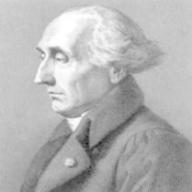Nuclear fusion
2013-03-30 10:27 pm
To achieve nuclear fusion between hydrogen nucleus, the required temperature should be about 10^7 K to 10^8 K. How to calculate this temperature? I got as 100~1000 times as the above-mentioned value from my calculation.
回答 (1)
2013-04-13 10:23 am
✔ 最佳答案
Here is the flow of my thinking. I just try to think about it. It might be not really true. My answer is also away from 10^8K
Flow of my thinking:
Hydrogen gas first change to hydrogen atom. The process need enthalpy of atomization which is 218 kJ mol-1 …(1)
H2(g) --> 2H(g) need 2x(218 kJ mol-1)
(1) http://www.webelements.com/hydrogen/thermochemistry.html
However, this energy is too low so it can be ignored.
I guess we may also ignore the repulsion btw electrons of 2 hydrogen. ( just use hydrogen to represent deuterium and tritium)
I jump to consider the Coulomb barrier for fusion. …(2)
U=(kq^2)/r where I use r >=1.7e-15 m. 1.7e-15 m is the diameter of hydrogen nuclues.
(2)http://hyperphysics.phy-astr.gsu.edu/hbase/nucene/coubar.html#c1
From this link, you can also get some info about fusion.
Due to the limit of my knowledge, I can just use internal energy= 3NkT/2 to link up temp and energy. (here may be some wrong in linking up these two things)
So, T is found. I get 10^10K
Although the temp is too high, we can use a high-energy tail of a lower temp to reach the initial fusion reaction requirement. …(3)
(3)http://hyperphysics.phy-astr.gsu.edu/hbase/nucene/coubar.html#c3
again, this link have more details.
Hope the hyperphysics link can help you to think!
收錄日期: 2021-04-13 19:23:47
原文連結 [永久失效]:
https://hk.answers.yahoo.com/question/index?qid=20130330000051KK00140

